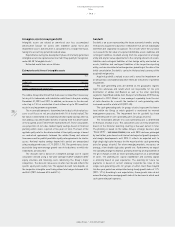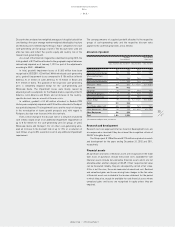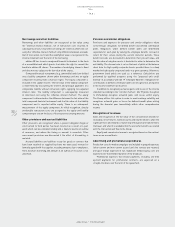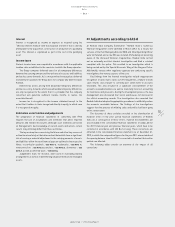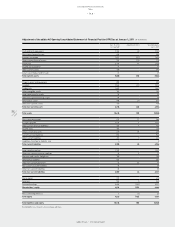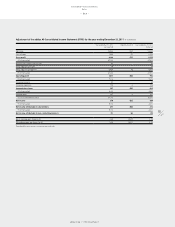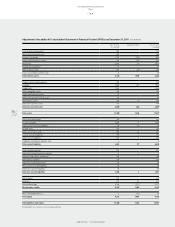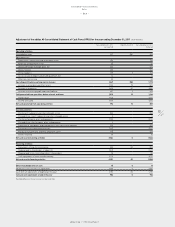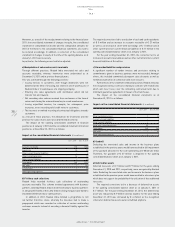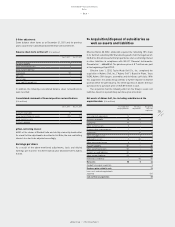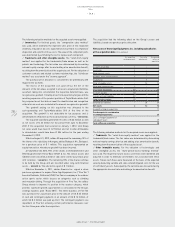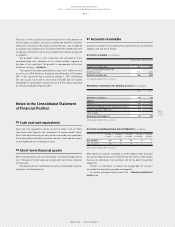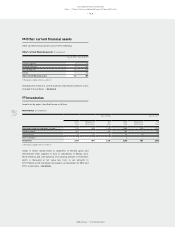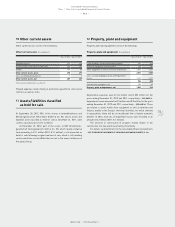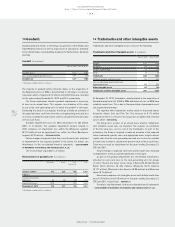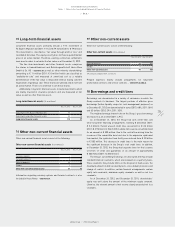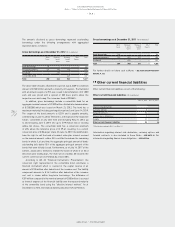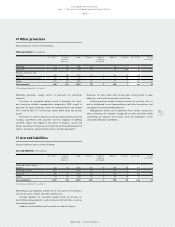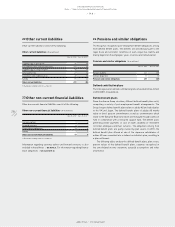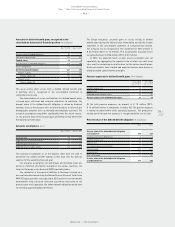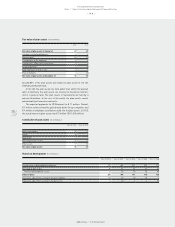Reebok 2012 Annual Report Download - page 232
Download and view the complete annual report
Please find page 232 of the 2012 Reebok annual report below. You can navigate through the pages in the report by either clicking on the pages listed below, or by using the keyword search tool below to find specific information within the annual report.
adidas Group
/
2012 Annual Report
Consolidated Financial Statements
210
2012
Notes
/
04.8
/
The following valuation methods for the acquired assets were applied:
/
Inventories: For finished goods, the “comparative sales method”
was used, which estimates the expected sales price of the respective
inventory, reduced for all costs expected to be incurred in its completion/
disposition and a profit on those costs. The value of the component parts
was determined by estimating the cost to replace each component.
/
Trademarks and other intangible assets: The “relief-from-royalty
method” was applied for the trademarks/trade names as well as for
patents and technology. The fair value was determined by discounting
notional royalty savings after tax and adding a tax amortisation benefit,
resulting from the amortisation of the acquired asset. For the valuation of
customer contracts and related customer relationships, the “distributor
method” was used under the “income approach”.
The purchase price allocation is considered to be preliminary with
regard to the tax items.
The excess of the acquisition cost paid versus the net of the
amounts of the fair values assigned to all assets acquired and liabilities
assumed, taking into consideration the respective deferred taxes, was
recognised as goodwill. It mainly arises from expected synergies and the
resulting expansion of the product portfolio of TaylorMade-adidas Golf.
Any acquired asset that did not meet the identification and recognition
criteria for an asset was included in the amount recognised as goodwill.
The goodwill arising on this acquisition was allocated to the
cash-generating unit TaylorMade-adidas Golf at the time of the
acquisition. The goodwill is not deductible for tax purposes and is
denominated in US dollars as the local functional currency
/
SEE NOTE 02.
The acquired subsidiary generated net sales of € 33 million as well
as net losses of € 22 million for the period from June to December
2012. If this acquisition had occurred on January 1, 2012, total Group
net sales would have been € 14.9 billion and net income attributable
to shareholders would have been € 534 million for the year ending
December 31, 2012.
Effective August 31, 2012, adidas AG acquired the remaining 15% of
the shares of its subsidiary in Hungary, adidas Budapest Kft., Budapest,
for a purchase price of € 1 million. This acquisition represented an
equity transaction, whereby no goodwill has been incurred.
At September 30, 2012, 90% of the shares in Immobilieninvest und
Betriebsgesellschaft Herzo-Base GmbH & Co. KG, whose assets and
liabilities were classified as held for sale, were sold for a purchase price
of € 14 million
/
SEE NOTE 11. The remaining 10% of the shares continue
to be held by the Group and are recorded under long-term financial
assets
/
SEE NOTE 15. The sale led to a gain of € 1 million.
Effective November 4, 2011, adidas America Inc. signed a share
purchase agreement to acquire Stone Age Equipment, Inc. (“Five Ten”)
based in Redlands, California (USA). Five Ten is a company in the outdoor
action sports sector, which focuses on categories such as climbing
and mountain biking. Through the acquisition of Five Ten, the adidas
Group intends to improve its position in the outdoor category, which
provides significant growth opportunities as articulated in the Group’s
strategic business plan “Route 2015”. The entire business of Five Ten
was purchased for a purchase price in the amount of US $ 25 million
in cash and contingent payments in an amount of US $ 13 million, of
which US $ 3 million was paid up front. The contingent payments are
dependent on Five Ten achieving certain performance measures over
the first three years after the acquisition.
The acquisition had the following effect on the Group’s assets and
liabilities, based on a purchase price allocation:
Net assets of Stone Age Equipment, Inc. including subsidiaries
at the acquisition date (€ in millions)
Pre-acquisition
carrying amounts
Fair value
adjustments
Recognised
values on
acquisition
Accounts receivable 2 – 2
Inventories 4 – 4
Other current assets 1 0 1
Property, plant and equipment 0 – 0
Trademarks – 8 8
Other intangible assets – 14 14
Other non-current assets 0 – 0
Short-term borrowings (0) – (0)
Accounts payable (3) – (3)
Current accrued liabilities (0) – (0)
Long-term borrowings (1) – (1)
Deferred tax liabilities – (9) (9)
Net assets 3 13 16
Goodwill arising on acquisition 11
Purchase price in consideration
of contingent payments 27
Less: contingent payments in
subsequent years (7)
Cash outflow on acquisition 20
The following valuation methods for the acquired assets were applied:
/
Trademark: The “relief-from-royalty method” was applied for the
trademark/trade name. The fair value was determined by discounting
notional royalty savings after tax and adding a tax amortisation benefit,
resulting from the amortisation of the acquired asset.
/
Other intangible assets: For the valuation of technologies and
other intangible assets, the “multi-period-excess-earnings method”
was used. The respective future excess cash flows were identified and
adjusted in order to eliminate all elements not associated with these
assets. Future cash flows were measured on the basis of the expected
sales by deducting variable and sales-related imputed costs for the use
of contributory assets. Subsequently, the outcome was discounted using
the appropriate discount rate and adding a tax amortisation benefit.


